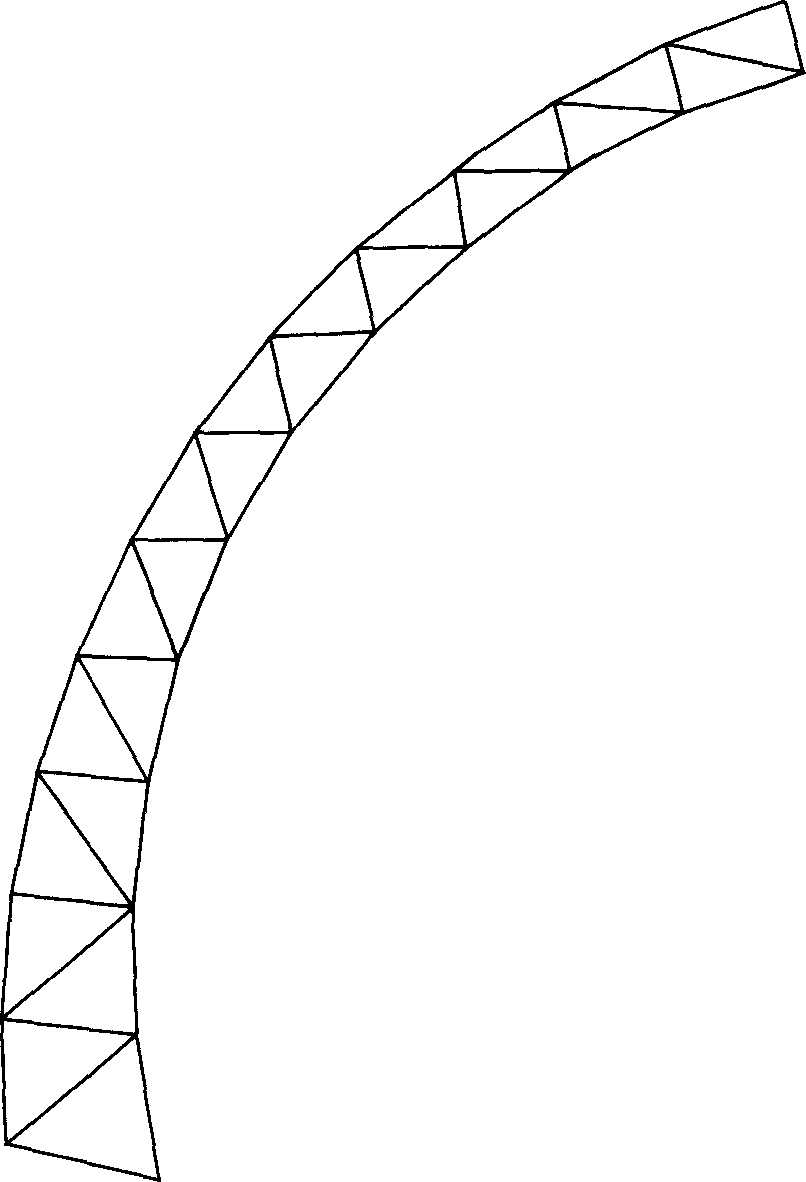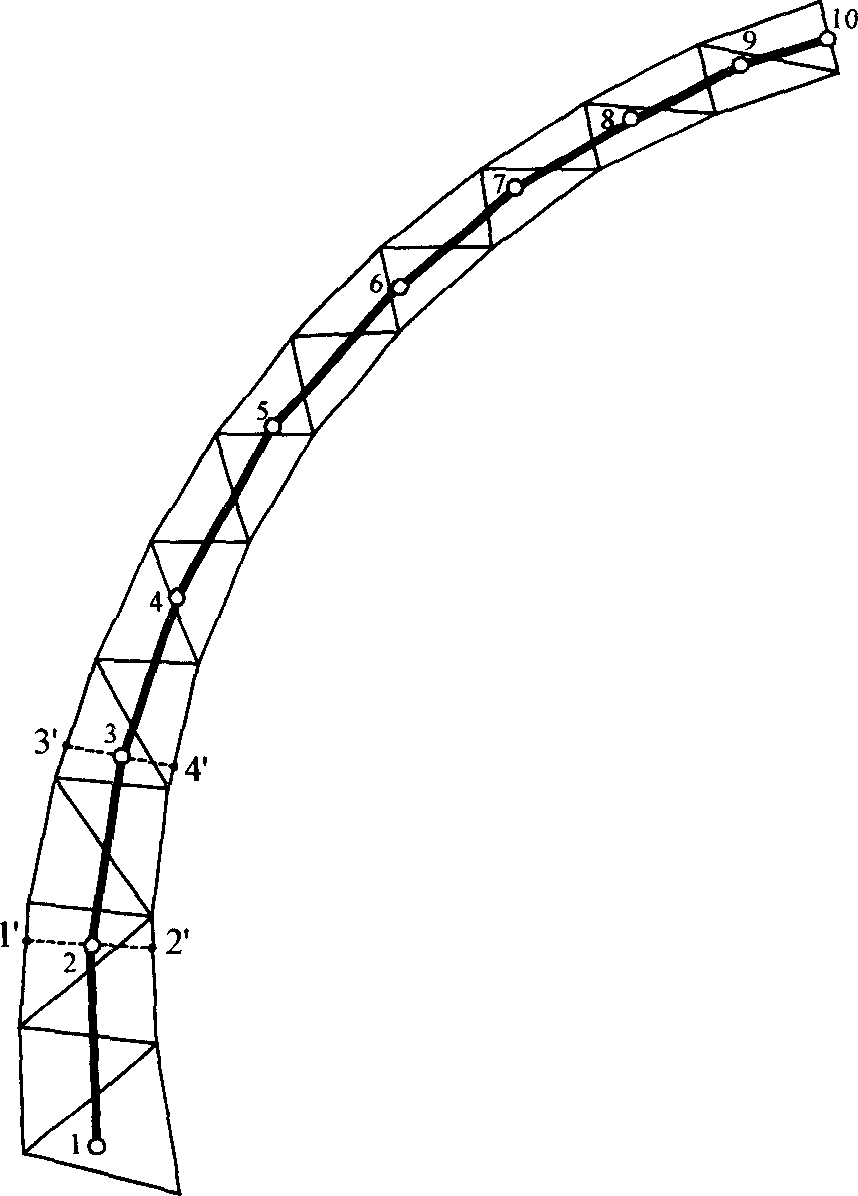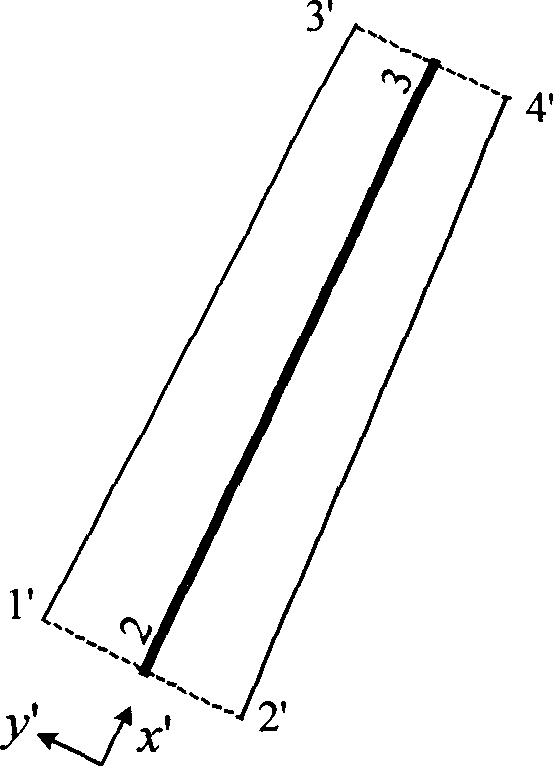Beam unit counting method with thickness
A calculation method and finite element technology, applied in the direction of architecture, building structure, etc., can solve the problems of inconvenience, programming processing difficulties, large calculation errors of deformed units, etc.
- Summary
- Abstract
- Description
- Claims
- Application Information
AI Technical Summary
Problems solved by technology
Method used
Image
Examples
Embodiment 1
[0073] Embodiment 1: cantilever beam
[0074] like Figure 5 The shown cantilever beam is subjected to a vertically downward uniform force p=5kN / m at the end, thickness t=1m, length l=10m, and width h=1m. The elastic modulus of the material E=2.8×10 7 kPa, Poisson's ratio μ = 0.2, excluding self-weight.
[0075] Table 1 Comparison of bending moment (kN.m) between the beam element method and the generalized beam element method
[0076]
[0077] The calculation result with beam element is as follows Image 6 shown. The results of beam bending distance calculated by generalized beam element are as follows: Figure 7 Shown, compared with the beam element calculation results are listed in Table 1. The bending moment of the beam element obtained by using the generalized beam element is in good agreement with the calculation result of the general beam element, and the maximum error is not more than 0.6%.
Embodiment 2
[0078] Example 2: Circular Tunnel
[0079] like Figure 8 The circular tunnel shown is subjected to vertical uniform force p=100kPa up and down, horizontal force e=λp=0.5×100=50kPa to the left and right, thickness t=0.4m, outer diameter r=5.0m. The elastic modulus of the material E=2.8×10 7 kPa, Poisson's ratio μ = 0.2, excluding self-weight.
[0080] According to the general beam unit calculation, the lining internal force calculation formula is
[0081] M = pr 2 4 ( 1 - λ ) cos 2 α N = pr ( cos ...
PUM
 Login to View More
Login to View More Abstract
Description
Claims
Application Information
 Login to View More
Login to View More - R&D
- Intellectual Property
- Life Sciences
- Materials
- Tech Scout
- Unparalleled Data Quality
- Higher Quality Content
- 60% Fewer Hallucinations
Browse by: Latest US Patents, China's latest patents, Technical Efficacy Thesaurus, Application Domain, Technology Topic, Popular Technical Reports.
© 2025 PatSnap. All rights reserved.Legal|Privacy policy|Modern Slavery Act Transparency Statement|Sitemap|About US| Contact US: help@patsnap.com



